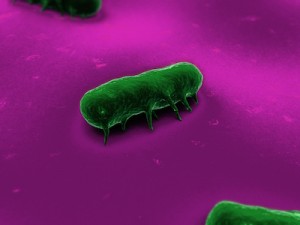Salmonella in ground turkey produced by Cargill Meat Solutions was the cause of a food poisoning outbreak that sickened 136 people and killed one person in 2011. But those numbers could have been lower if health officials acted more quickly, according to a new study by the Pew Charitable Trusts.
 It took investigators at the U.S. Centers for Disease Control and Prevention (CDC) and the U.S. Department of Agriculture’s Food Safety and Inspection Service (FSIS) months to identify the source of the outbreak. It was 22 weeks after the first person became ill and 10 weeks after CDC detected the outbreak before the illnesses were linked to ground turkey produced at Cargill’s plant in Springdale, Ark. The outbreak began five months before the CDC announced it on August 1, 2011. During those five months 127 people became ill.
It took investigators at the U.S. Centers for Disease Control and Prevention (CDC) and the U.S. Department of Agriculture’s Food Safety and Inspection Service (FSIS) months to identify the source of the outbreak. It was 22 weeks after the first person became ill and 10 weeks after CDC detected the outbreak before the illnesses were linked to ground turkey produced at Cargill’s plant in Springdale, Ark. The outbreak began five months before the CDC announced it on August 1, 2011. During those five months 127 people became ill.
Pew identified three main problems with the existing system that prevented authorities from discovering the food source more quickly. The first is that although Salmonella sickens 1 million people every year at an annual cost of $11 billion, it isn’t given as much attention as other pathogens. Culturing bacterial samples from patients isn’t required in all states and public health labs don’t perform DNA fingerprinting of Salmonella isolates uniformly.
The second problem is that when public health officials post DNA fingerprints on PulseNet, a national network of foodborne bacteria information, the isolates are not identified with the brand names or the processing plants where they were produced. That takes longer for officials to connect the dots. And the third problem is that food companies are not engaged in the investigation early enough.
By addressing these problems, health officials can improve their response to foodborne illness outbreaks, the report says. Those recommendations are consistent with requirements outlined in the Section 205 of the Food Safety Modernization Act which directs the CDC to improve surveillance of foodborne illness.





There is a huge misconception on what actions are taken in an outbreak. When sample results are first reported in PulseNet, these are patient samples not food products. Foods, brands, manufacturers are nowhere near being identified. An outbreak first must be recognized. Then, CDC and State/Local health departments interview patients and/or people close to patients to help identify the probably cause and collect samples. Why does it take so long? The First problem is ill consumers not going to the doctor/hospital. Second problem – patients may be diagnosed with a food-borne illness but the Dr. prescribes treatment with no further action to actually identify the pathogen. The outbreak may be in full swing before patients end up in the hospital where most of the sampling from the patient would occur. Third problem – it may take weeks before a patient becomes ill. People have problems remembering what they ate the night before let alone a week ago. It’s not magic. It isn’t so simple as people becoming sick and “poof” the food product has been identified. It may take months, following up on leads, even being misdirected before the cause is identified. And cause may never be identified. Interviews were not successful, product no longer existed to be sampled. There rarely is a “smoking gun”.
You’re right on some points. Outbreaks are very difficult to investigate and can take months. But PulseNet does store patient and food results, according to the CDC. Another problem is that many labs do not identify some strains of pathogenic bacteria, such as E. coli 0121 that is causing the current Farm Rich outbreak. And food recall is a serious issue. Lots of people think that the last food they ate caused their illness. With Listeria, the illness may not occur until more than two months have passed since the person ate the contaminated food. But the government still must release the names of the parties responsible for the outbreak so people can tell if they may have been exposed, and food manufacturers must start test and hold, rather than releasing foods before tests results for pathogens come back.
MONTHS? Ridiculous!